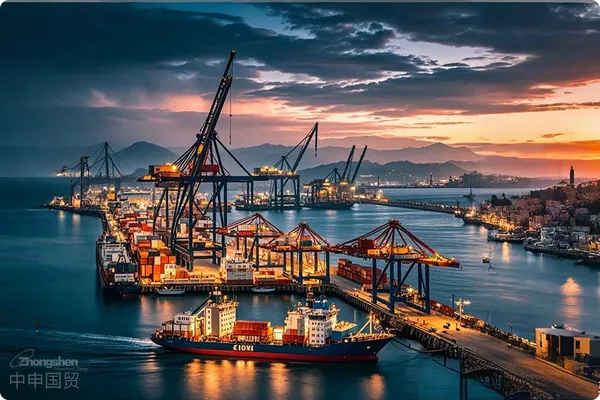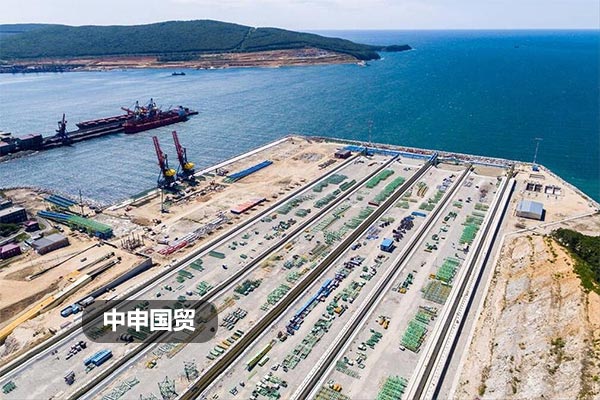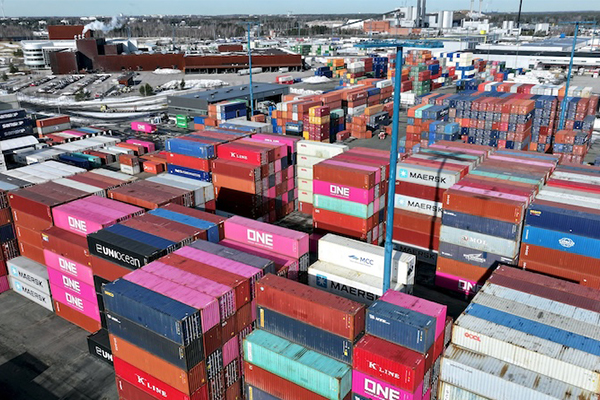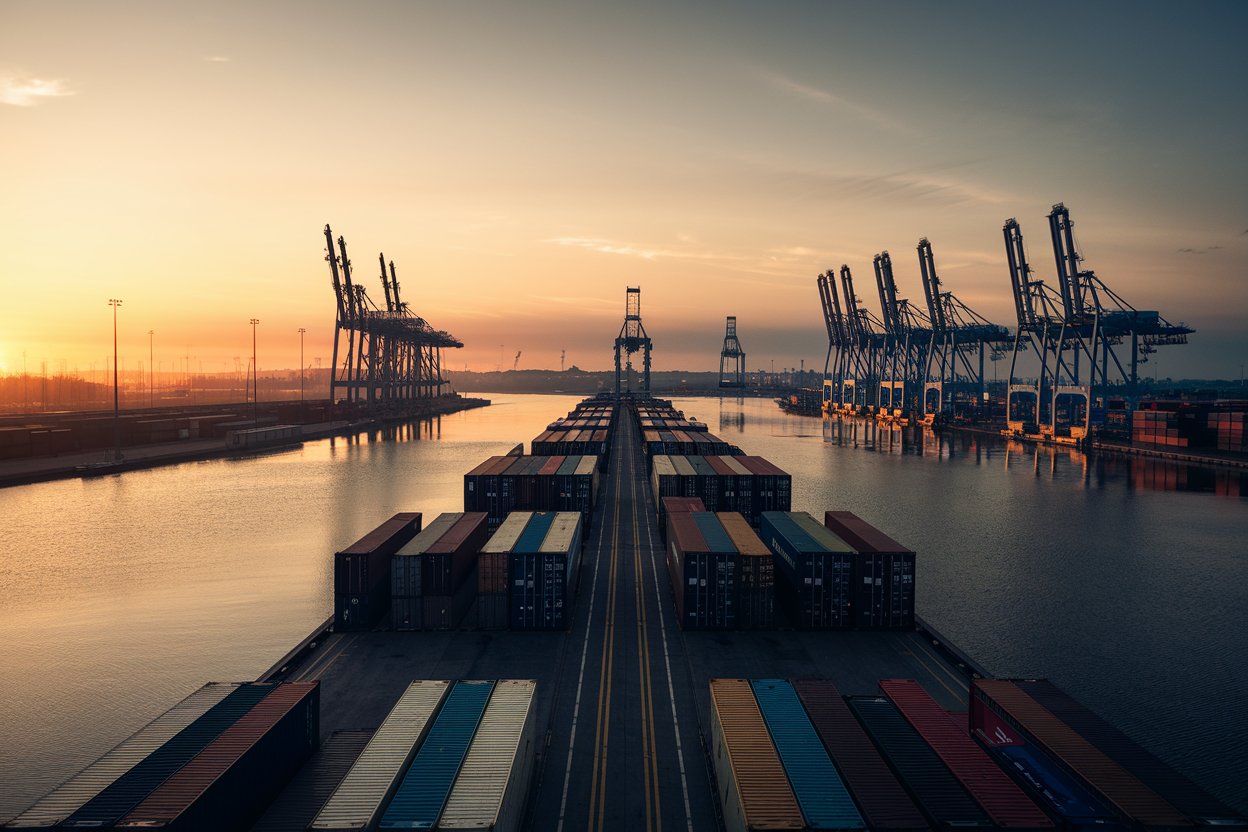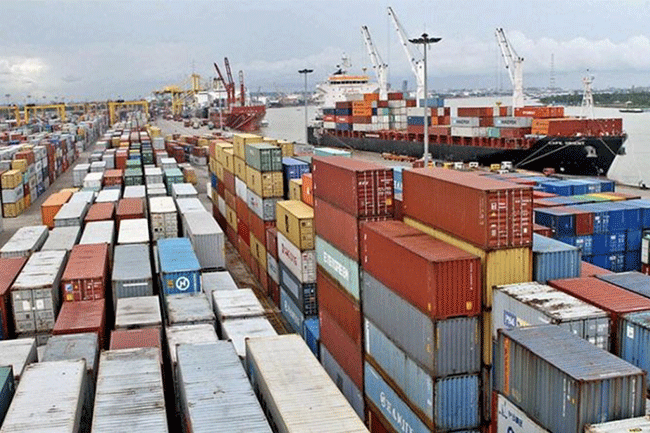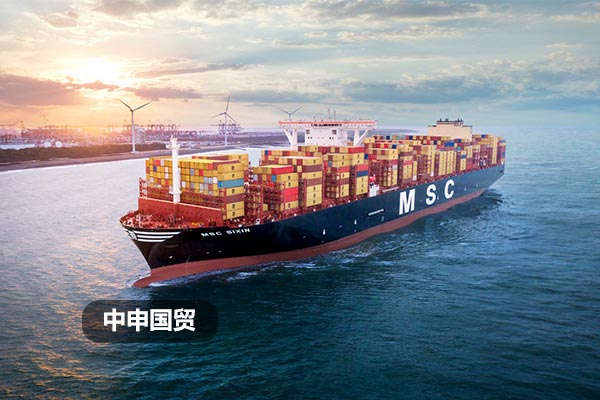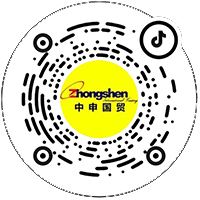How to Avoid Compliance Risks When Exporting Equipment via a Foreign Trade Agent?
亚洲欧洲国产欧美一区精品 |
久久久精品午夜免费不卡 |
精品亚洲国产成人痴汉av |
欧美在线不卡视频每天更新 |
2中文字幕版亚洲无乱码 |
狠狠人妻久久久久久综合密桃 |
亚洲国产欧美日韩成人精专区 |
国产欧美韩日一二精品专区 |
疯狂欧美牲乱大交777 |
欧美日韩国产中文一区二区 |
久久久久精品久久综合av |
91视在线国内在线播放 |
美女露小粉嫩91精品久久久 |
欧洲精品一区二区三区中文字幕 |
精品国产乱码久久久久久夜深
|
成人黄色在线免费观看网站 |
国产在线精品一区在线观看麻豆
|
国产欧美一区二区三区精剧 |
日韩黄色成人影院在线观看 |
国产精东av剧情在线一区二区 |
污污污的网站在线免费看 |
国产精品久久久久福利电影 |
日韩在线视频不卡一区二区三区 |
久久乐国产精品一区二区三区 |
亚洲精品一区二区三区麻豆 |
亚洲中文字幕精品熟女一区 |
精品人妻二区三区在线免费观看 |
中文字幕欧美精品人妻一区 |
色婷婷一区二区三区四区成人 |
黄色片子中文字幕版免费 |
视频区 图片区 小说区免费 |
国产一区二区在线播放黄色高清 |
人妻精品未满十八少妇精品
|
欧美日韩国产精品系列区
|
欧美日韩一码二码三区四区 |
亚洲av中文有码免费观看 |
欧美日韩加勒比一二三区 |
国产黄色一级电影一区二区 |
亚洲一区二区三区欧美精品 |
亚洲欧洲精品一区二区三区不卡 |
欧美色综合天天综合高清网 |
亚洲精品九九九人妻av |
久久99精品久久久久蜜桃tv
|
欧美二区三区久久久精品 |
后入亚洲美女一区二区三区 |
人妻一本久道久久综合久久鬼色 |
亚洲av噜噜噜一区二区三区 |
欧美色精品视频在线观看 |
色噜噜色狠狠狠狠狠综合色一
|
巨乳人妻的诱惑电影日本 |
暗交小拗女一区二区三区 |
久久麻豆精亚洲av品国产精品
|
开心五月激情五月婷婷综合网
|
日韩av一区二区中文字幕 |
欧美日韩国产精品系列区 |
亚洲精品亚洲人在线观看 |
97视频在线观看男人的天堂 |
加勒比东京热拍拍一区二区 |
成a人片亚洲日本久久69 |
欧美日韩国产中文在线一区二区 |
久久亚洲国产精品五月天 |
一区二区三区日本韩国欧美 |
综合久久久久综合综合久久久久 |
欧美一区二区三区中文字幕在线 |
国产自产一区二区三区视频
|
国产欧美在线一区二区三 |
日韩一区日韩二区日韩三区 |
亚洲精品亚洲人在线观看 |
日韩特级黄色大片在线观看
|
不卡在线一一区二区三区91 |
五月婷婷啪啪啪综合视频 |
久久综合色最新久久综合色 |
国产电影一区二区三区在线观看 |
日韩av一区二区三区免费观看 |
蜜臀av免费一区二区三区观看
|
国产精品中文字幕在线观看 |
欧美韩一区二区三区电影免费看
|
五月婷婷激情桃花床戏视频网
|
欧美日韩精品一区二区在线观看 |
色哟哟一区二区三区中文字幕 |
精品一区二区三区熟女少妇 |
亚洲欧洲成人va在线观看 |
亚洲精品aⅴ中文字幕乱码麻豆 |
一区二区三区亚洲中文字幕 |
亚洲av乱码一区二区三区绯色 |
久久国产亚洲精品超碰热 |
精品精品国产一区二区性色av |
欧美猛少妇色xxxx久久久久久 |
日韩欧美中文字幕无敌色 |
手机在线观看国产一区二区三区 |
亚洲人成网站18禁止天堂 |
国产主播欧美日韩在线播放 |
欧洲精品一区二区三区中文字幕 |
色呦呦免费观看一区二区 |
国产精品国产三级国av在线观看 |
欧美日韩精品一区二区不卡 |
18禁超污无遮挡网站免费 |
亚洲精品国产成人综合久久久小说
|
最好看的日韩中文字幕电影 |
国产中文高清日韩av网站 |
92精品欧美一区二区三区 |
亚洲精品aⅴ中文字幕乱码麻豆 |
美女性感黄网站视频久久久 |
欧美一区二区精品久久久 |
亚洲国产av一区二区香蕉精品 |
欧美极品色午夜视频在线观看 |
欧美三级韩国三级日本三斤 |
亚洲熟女自拍偷拍一区二区 |
亚洲熟女av综合一区二区三区个 |
欧美一区二区在线观看不卡 |
最新国产免费成人色av |
国产精品免费在线一区二区 |
亚洲毛片av不卡一区二区三区 |
在线观看免费视频伊人网 |
日韩国产另类欧美在线观看 |
欧美亚洲成人一区二区三区 |
黄黄黄污污污的免费网站 |
国产精品久久久亚洲综合天堂 |
在线精品国产亚洲av日韩 |
哪里可以看日本动作电影 |
国产精品久久久亚洲天堂 |
国产亚洲加勒比久久精品 |
91的麻豆精品国产自产在线 |
精品国产污免费网站入口 |
亚洲欧美日韩另类专区第八区
|
精品人妻一区二区三区在线影院 |
欧美不卡一二三在线视频 |
欧美一区两区三区在线观看 |
欧美大片免费观看一区二区 |
高清日韩一区二区三区视频 |
精品人妻av综合一区二区 |
久久精品亚洲国产av麻豆长发 |
日韩久久精品视频一二三区 |
日韩在线一区二区三区中文字幕 |
人妻少妇精品一区毛二区 |
午夜视频在线观看视频在线观看视频
|
欧美激情一区二区三区啪啪啪 |
国产一区二区三区 视频 |
亚洲欧美日韩精品免费观看 |
色婷婷av一区二区三区免费 |
日韩久久精品视频一二三区 |
亚洲av成人一区国产精品 |
中文字幕一区二区三区欧美日韩 |
国产一级性片在线观看 |
亚洲午夜一级艳片欧美精品
|
亚洲一区二区三区欧美精品 |
国产一区二区三区色噜噜蝌蚪 |
国产av剧情精品老熟女 |
亚洲限制级电影一区二区 |
亚洲天堂熟女一区二区三区 |
国产成人久久精品一区二区三区欧美 |
日本高清区一区二区三区四区五区 |
老司机精品成人免费视频 |
国产亚洲欧美日韩在线爱豆
|
免费看国产污黄剧情网站 |
视频一区二区三区四区五六区 |
国产亚洲欧美日韩看国产 |
小说区图片区偷拍区视频
|
精品人妻少妇嫩草av码专区 |
亚洲区欧美区综合区自拍区 |
日韩在线欧美在线国产在线 |
秋霞伦理日韩中文字幕av |
国产精品性色一区二区三区在线蜜 |
久久99精品久久久久久秒播
|
国产精品中文字幕在线观看 |
日本男女啪啪啪一区二区三区 |
久久婷婷色香五月综合图 |
亚洲精品一区二区三区小说 |
日本人妻久久久久久久久 |
日本高清视频一区二区在线观看 |
亚洲精品涩涩在线观看 |
欧美日韩高清在线观看一区二区 |
91精品国产综合久久香蕉观看
|
国产欧美一区二区三区不卡高清 |
日韩欧美亚洲国产精品字幕久久久 |
亚洲成a人片在线观看yau |
狠狠深爱婷婷久久综合区一 |
小泽玛利亚影片在线观看 |
69堂国产成人精品视频 |
精品久久国产老人久久综合 |
欧美激情精品久久久高清 |
国产av一区二区日夜精品剧情
|
午夜精品久久久久9999高清 |
国产黄片一区二区三区四区 |
欧美巨大精品一区二区三区
|
欧美中文字幕一二三四乱码 |
国产精品69堂凸凹视频 |
国产日韩欧洲亚洲一二三区 |
欧美日韩精品综合一区二区 |
欧美日一区二区三区精品 |
国产一区二区三区精品在线观看
|
78色精品一区二区三区 |
黄色影院在线观看一区二区
|
人人妻人人妻人人妻碰碰 |
亚洲欧美国产一区二区三区奶水 |
神马午夜福利影院在线观看 |
久久精品国产亚洲av麻 |
妖精视频一区二区三区四区 |
日韩精品 亚洲一区二区三区 |
午夜视频在线观看精品200 |
国产亚洲精品综合一区二区 |
亚洲精品一区二区三区四区av |
精品人妻午夜一区二区三区四区 |
国产在线视频欧美一区二区三区 |
精品少妇极品久久久久久久 |
欧美一区国产二区在线观看 |
久久产精品一区二区三区日韩
|
91色老久久精品偷偷蜜臀九色
|
五月综合婷婷开心综合婷婷 |
五月婷久久不能精品视频 |
国产自产一区二区三区视频 |
久久久精品免费久精品蜜桃 |
欧美国产精品久久久久久 |
久久一区二区三区欧美亚洲 |
日韩精品一区二区三区不长视频
|
国产亚洲欧美传媒麻豆精品 |
欧美精品一区二区日韩精品 |
亚洲福利欧美日韩午夜一区 |
国产爽爽爽爽爽爽爽爽爽 |
久久婷婷色香五月综合图 |
一本大道综合伊人精品热热 |
色婷婷在线免费观看视频 |
小泽玛利亚的电影在线观看 |
日本精品动漫一区二区三区 |
国产老熟女午夜精品视频 |
精品国产乱码久久久久久夜深 |
一区二区三区四区欧美日韩日本道 |
色综合一区二区日本韩国亚洲 |
日韩一区二区三区四区在线观看视频
|
国产精品久久久久福利电影 |
国产精品成人观看视频网站 |
日韩精品一区二区亚洲av性色 |
欧美国产精品久久久免费 |
国产主播一区二区三区在线观看 |
九九热久久这里有免费精品
|
欧美一区二区在线观看不卡 |
19久久久国产一区二区 |
日本免费一区二区三区视频在线 |
最新国产免费成人色av |
亚洲熟女少妇一区二区三区 |
日韩亚洲欧美中文字幕在线观看 |
国产日本欧美在线一区二区 |
伊人婷婷涩六月丁香七月 |
天堂网久久久国产午夜精品一二 |
亚洲区欧美区综合区自拍区 |
五月婷婷啪啪啪综合视频 |
久久久精品少妇一区二区三区
|
91一区二区三区久久国产乱 |
日韩一区二区三区四区在线观看视频 |
欧美视频黄页大全在线观看 |
国内一区二区三区黄色片 |
国产乱人精品视频69av |
亚洲十大美女色爽av毛片下载 |
精品国产高清三级在线观看 |
欧美黄色一区二区在线观看 |
欧美不卡一二三在线视频 |
亚洲精品中文字幕无乱码麻豆 |
国产综合欧美专区一区二区三区 |
成人午夜视频全免费观看高清 |
欧美色欧美精品在线观看 |
国产精品国产三级国产剧情 |
国产欧美一区二区三区不卡高清 |
久久91精品国产丰满美女
|
人妻在线视频一区二区三区
|
久超在线精品av一区二区三区 |
亚洲加勒比精品一区二区 |
国产无人区码一码二码三码区别 |
国产精品性色一区二区三区在线蜜 |
国产激情久久久久久熟女 |
狠狠人妻久久久久久综合69 |
性感91白丝美女在线精品 |
国产亚洲欧洲av一区二区三区 |
欧美激情一区二区三区四区 |
欧美日韩国产中文在线一区二区 |
欧美黄色免费网站在线观看 |
欧洲欧美精品日韩色午夜 |
色综合一区二区日本韩国亚洲 |
精品国产污污在线18禁 |
日韩在线一区二区三区中文字幕 |
男人天堂国产在线2019 |
欧美精品久久一区二区三区四区 |
一区二区三区中文字幕乱码 |
五月婷婷啪啪啪综合视频 |
国产一区二区三区精品成人爱 |
国产欧美国产精品第二区 |
最近中文字幕高清免费大全
|
日韩国产亚洲一区二区三区 |
久久乐国产精品一区二区三区 |
91精品国产色综合久久久蜜香臀 |
尤物精品国产第一福利网站 |
国产精品白丝av嫩草影院 |
亚洲产国偷v产偷v自拍一区
|
国产亚洲av午夜在线路线 |
精品国产一区二区三区久久久性 |
91亚洲欧美综合高清在线 |
精品美女视频一区二区三区 |
亚洲精品国产成人久久精品网 |
国产婷婷香蕉av一区二区三区 |
久久精品亚州一区二区三区 |
色婷婷av一区二区三区免费 |
亚洲欧美日韩加勒比在线 |
欧美精品高清在线一区二区三区 |
色综合天天综合网国产人
|
日本免费电影在线观看一区二区三区
|
久久久国产综合av天堂 |
欧美亚洲一区二区久久播 |
欧美一区二区三区四区五区 |
欧美成人高清精品一区二区 |
欧美一区二区三区四区乱码小说 |
美女性黄久久久国产精品 |
日本黄色中文字幕不卡在线 |
亚洲av日韩av在线播放 |
国产精品白丝av嫩草影院 |
黄色av网站未满十八周岁在线播放 |
青苹果影院在线亚洲一区二区三区 |
国产亚洲欧美一区二区精 |
久久九九视频免费观看久久九九视频 |
国产精东av剧情在线一区二区
|
大胸熟女少妇一区二区三区 |
国产主播欧美日韩在线播放 |
少妇人妻精品一区三区二区
|
欧美激情欲高潮视频高清 |
日韩av免费高清在线观看 |
欧美一区二区三区四区乱码小说 |
18禁无遮挡禁无遮挡免费播放 |
中文字幕在线高清第一页 |
国产在线视频欧美一区二区三区
|
亚洲十八禁在线免费观看 |
亚洲人成一区二区三区不卡 |
日韩av免费高清在线观看 |
国产欧美日韩精品久久久 |
日韩av免费高清在线观看 |
亚洲精品中文字幕无乱码麻豆 |
小泽玛利亚影片在线观看 |
成人黄页网站在线观看视频 |
中国一区二区三区高清电影 |
狠狠人妻久久久久久综合69 |
精品一区二区三区av在线 |
精品亚洲国产成人痴汉av |
国产精品久久久亚洲综合天堂
|
美女高跟鞋喷水一区二区 |
久久婷婷色香五月综合图 |
国产乱码欧美乱码在线视频 |
亚洲一区二区在线观看的av |
51国产午夜精品免费视频 |
欧美一区二区三区免费在线观看 |
青青草av一区二区三区 |
久久国产午夜精品理论片3 |
日韩黄色成人影院在线观看 |
精品一区二区三区高潮视频 |
日本黄色中文字幕不卡在线 |
精品久久久国产成人久久综合一 |
青青草亚洲在线一区观看 |
综合久久五十路熟女中出
|
久久夜色撩人精品国产小说免费 |
国产精品一区二区色蜜蜜 |
婷婷在线五月天在线视频 |
亚洲欧美日韩综合第一第二区 |
欧美一区二区精品人妻 |
开心五月激情五月婷婷综合网
|
精品国产精品久久一区免费式 |
美女洗澡私拍一区二区三区 |
国产亚洲精品福利视频 |
亚洲av资源网站在线观看 |
日韩精品一区二区三区色 |
欧美日韩国产三级一区二区三区 |
黄色资源网日韩三级一区二区 |
色姑娘天天操天天日天天舔 |
欧美精品一区二区三区日韩
|
欧美日韩久久久久免费看 |
51国产午夜精品免费视频 |
国内精品自线一区二区三区视频
|
日韩欧美国产一区二区在线
|
国产成人亚洲欧美在线二区小说
|
欧美激情精品久久久高清 |
色综合一区二区日本韩国亚洲 |
国产午夜精品理论片免费视频 |
欧美一区二区三区免费在线观看
|
精品国产污免费网站入口 |
不卡国产精品爽黄69天堂 |
黄页男女视频网址大全免费观看 |
欧美日韩一区二区三区精品视频 |
嫩草国产一区二区三区av |
国产精品欧美日韩在线观看 |
色哟哟一区二区国产精品 |
精品久久久久久久免费影院大全 |
红桃视频污在线观看视频在线观看 |
91国偷自产中文字幕幕 |
欧美日韩国产精品系列区 |
久久精品国产热久久精品国产亚洲 |
亚洲电影在线一区二区三区 |
国产亚洲综合一区二区在线观看
|
91久久国产精品久久91 |
91国偷自产中文字幕幕 |
午夜视频久久播五月婷婷 |
适合一家人看的国产电影 |
最新国产美女一区二区三区 |
欧美色偷偷在线视频播放 |
欧美精品一区二区三区日韩 |
国产精品激情视频一区二区三区 |
国产免费一区二区三区性色 |
久久艹精彩视频免费观看 |
美女露小粉嫩91精品久久久 |
91香蕉视频在线观看污污污
|
成人美女黄网站色大色费全看下载
|
亚洲av成人一区二区三区在线 |
日本伦理在线观看中文字幕 |
日韩欧美一区二区三区三 |
欧美制服丝袜国产日韩一区 |
五月天综合网亚洲精品国产精品 |
日韩熟女精品一区二区三区视频
|
小说区图片区视频区亚洲 |
久久精品一二欧美无婷婷 |
亚洲欧美日韩人成在线播放 |
欧美日韩精品一区二区中文字幕 |
日韩精品a欧美精品a亚洲精品 |
疯狂欧美牲乱大交777 |
欧美国产精品久久久久久 |
久久婷婷色一区二区三区 |
亚洲中文字幕精品熟女一区 |
日韩国产精品综合高清av= |
精品国产精品网麻豆系列 |
91精品国产薄丝高跟在线播 |
日韩一区二区三区四区在线观看视频 |
成人黄色在线免费观看网站 |
国产精品国产三级农村妇女 |
欧美精品秘密入口一区二区三区 |
久久av一区二区三区四区五区 |
大胸熟女少妇一区二区三区 |
一区二区三区四区中文字幕欧美 |
久久九九视频免费观看久久九九视频 |
久碰久摸久看好男人视频 |
亚洲欧美国产日韩中文丝袜 |
国产精品国产三级国产av主播
|
亚洲av资源网站在线观看 |
一本之道av免费在线观看 |
日韩亚洲欧美中文字幕在线观看 |
成人黄色小视频下载网站 |
亚洲中文字幕日韩一区二区 |
欧美日韩国产欧美日韩国产欧美日韩 |
久久久一区二区三区999 |
99久久一区二区三区免费 |
久久久熟妇五十路二区一区 |
黄色三级电影一区二区三区四区
|
国产欧美日韩一区二区三区精品
|
在线精品日韩亚洲欧一二三区 |
成人免费av中文字幕电影 |
国产主播一区二区三区在线观看
|
精品女同一区二区三区亚亚洲洲
|
国产精品久久久久福利电影 |
午夜福利合集极品精品视频 |
国产精品国产三级国产专区 |
日本一区二区在线视频观看
|
国产流白浆一区二区三区免费视频
|
国产精品午夜福利影院在线观看 |
国产精品欧美日韩中字一区二区 |
国产自产av一区二区三区性色
|
综合欧美视频一区二区三区 |
亚洲欧洲国产欧美一区精品 |
亚洲欧洲精品一区二区三区不卡 |
亚洲午夜一级艳片欧美精品 |
亚洲欧美中文日韩另类特殊 |
精品久久久一区二区三区国产 |
欧美一区二区三区综合色 |
国产精品极品白嫩在线 |
国产精品亚洲二区在线看 |
国产高清精品免费在线观看 |
综合欧美视频一区二区三区 |
国产一区二区三区久久综合 |
99re热自拍视频在线 |
婷婷激情综合亚洲五月色 |
亚洲av激情电影在线观看 |
亚洲一区二区三区四区五区六 |
日韩激情视频免费在线观看 |
疯狂欧美牲乱大交777
|
一区二区亚洲欧美在线观看 |
同房后下面流黄黄的液体 |
精品夜夜嗨av一区二区 |
一区二区三区在线日本在线视频 |
欧美黄色免费网站在线观看 |
91精品国产91久久福利 |
国产亚洲欧美传媒麻豆精品
|
久久久久夜色国产精品亚洲av |
欧美日韩精品一区二区在线 |
亚洲国产色一区二区三区 |
国产高清在线精品一区二区三 |
开心五月激情五月婷婷综合网 |
日韩久久精品视频一二三区 |
欧美日一区二区三区精品 |
精品人妻少妇嫩草av码专区
|
亚洲电影天堂之男人的服务天堂 |
亚洲人成伊人成综合网76 |
久久99精品久久久免费看永久 |
日韩免费高清中文av |
日韩欧美精品视频一区二区三区 |
日韩人妻成人福利电影一区二区
|
日本亚洲一区二区色噜噜 |
亚洲欧洲国产欧美一区精品
|
国产一级二级三级在线观看视频
|
蜜桃视频一区二区三区在线观看 |
久久精品国产亚洲av蜜屁股 |
91色老久久精品偷偷蜜臀九色 |
中文字幕十乱码中文字幕 |
欧美国产成人久久精品直播 |
国产99视频精品免费视频美女 |
91精品人妻一区二区三区蜜臀 |
日韩在线一区二区三区中文字幕
|
成人欧美一区二区三区在线小说
|
97视频在线观看男人的天堂 |
在线看片日本免费一区二区 |
我吸着老师的白嫩大乳漫画 |
欧美日韩久久久久免费看 |
黄色三级电影一区二区三区四区
|
日韩精品一区二区三区四区不卡 |
九九热久久这里有免费精品 |
色播五月麻豆激情综合网 |
精品久久久久久人妻熟妇
|
亚州女同性恋一区二区三区 |
亚洲福利欧美日韩午夜一区
|
青青草原在线视频欧美 |
日本东京热久久成人免费电影
|
五月激情综合婷婷六月久久
|
国产一区你懂的在线观看 |
国产乱码欧美乱码在线视频 |
亚洲av极品男人的天堂观看 |
精品人妻潮喷久久久又裸又黄
|
夜夜夜夜爽爽爽爽爽爽爽 |
一区二区三区日本韩国欧美 |
亚洲欧洲精品一区二区三区不卡
|
四季av一区二区三区中文字幕 |
18禁真人污视免费网站 |
中文字幕欧美老熟妇一区二区 |
亚洲精品aⅴ中文字幕乱码麻豆 |
中文字幕在线高清第一页 |
国产欧美日韩在线一区二区 |
暗交小拗女一区二区三区 |
国产精品亚洲一区二区久久 |
色哟哟一区二区国产精品 |
成人黄页视频在线播放 |
一区二区三区av 在线播放 |
精品国产一区二区三区久久久性
|
欧美久久久久久久一区二区三区 |
日本a级一区二区资源网站 |
午夜亚洲精品久久久久久小说 |
精品国产精品久久一区免费式 |
小泽玛利亚影片在线观看 |
99精品免费久久久久久久久 |
日韩人妻精品久久久久久 |
在线精品国产亚洲av日韩 |
国产午夜精品理论片免费视频 |
你懂的国产精品永久在线 |
欧美日韩3一区二区三区精品 |
日韩精品亚洲一区二区三区四区
|
国产看片色网站亚洲av |
国产成人一区二区青青草原 |
国产老熟女午夜精品视频 |
亚洲成人精品国产一区二区 |
午夜福利国产盗摄久久性 |
91精品国产综合久久久久久蜜月 |
亚洲av日韩精品久久国产 |
欧美一区二区在线电影网 |
午夜精品内射少妇视频在线 |
天天天天天日夜夜夜夜夜夜操 |
欧美色精品视频在线观看
|
久久久一区二区亚洲三区 |
日韩男女激情片段在线观看视频
|
黄色资源网日韩三级一区二区 |
精品亚洲国产成人痴汉av |
国产精品一区二区 日韩 欧美 |
国产另类av一区二区三区 |
日韩夫妻精品熟妇人妻一区 |
久久91精品国产丰满美女 |
精品一区二区三区av在线
|
精品亚洲国产成人痴汉av |
日韩不卡一区二区三区四区 |
日韩欧美中文字幕一区二区三区 |
日韩久久精品视频一二三区 |
国产亚洲一区二区三区在线播放
|
国产一区你懂的在线观看 |
91麻豆精品国产91久久久熟女 |
亚洲欧美国产精品中文字幕 |
999中文视频在线观看
|
国产流白浆一区二区三区免费视频 |
色综合天天综合网天天狠天天
|
亚洲国产av一区二区三区 |
国产成人女人毛片视频在线 |
一区二区三区亚洲欧美日韩人色
|
国产成人亚洲欧美在线二区小说 |
欧美一区二区三区四区乱码小说 |
久久久久久久国产黄片 |
亚洲精品欧美白浆久久久 |
精品一区二区三区成人免费视频 |
国产午夜免费电影在线观看 |
国产精品午夜福利免费视频 |
精品人妻潮喷久久久又裸又黄 |
国产一区二区精品久久呦 |
色播五月麻豆激情综合网 |
国产精品久久久久福利电影 |
日韩欧美中文字幕一区二区三区 |
亚洲天堂一区二区三区在线观看 |
欧美国产成人久久精品直播 |
天天天天天日夜夜夜夜夜夜操
|
欧美日本一道道一区二区 |
国产精品女人高潮毛片视频 |
最新国产免费成人色av |
亚洲精品国产久久久久久 |
欧美激情一区二区三区四区 |
亚洲视频在线观看第一区
|
中文字幕日韩欧美日韩在线 |
日韩成人精品在线播放 |
小泽玛利亚电影免费在线观看 |
国产欧美大陆日韩精品亚洲综合 |
97影院理论片在线观看 |
日韩精品中文字幕网在线 |
四季av一区二区三区中文字幕 |
亚洲精品国产综合一线久久 |
久久久精品少妇一区二区三区 |
一区二区三区视频二男一女 |
黄页网站免费观看小视频 |
国产美女捏自己奶头91
|
国产中文高清日韩av网站
|
精品一区二区三区视频男人吃奶 |
久久亚洲国产精品五月天 |
亚洲国产欧美在线人成人 |
亚洲欧洲国产欧美一区精品 |
国产欧美精品一区二区在线 |
欧美老人与小伙子性生交 |
亚洲成a人片在线观看无遮挡 |
日韩乱码免费一区二区三区 |
国产成人亚洲综合小说区 |
99久久精品氩 99久久久 |
欧美成人精品视频一区二区 |
清纯唯美亚洲色图在线视频 |
在线观看精品国产亚洲av |
亚洲av色图一区二区三区 |
日本动漫人妻作爱大尺度 |
欧美日韩二区三区在线观看 |
欧美日韩高清在线观看一区二区
|
午夜午夜精品一区二区三区 |
日韩在线欧美在线国产在线 |
亚洲国产韩国欧美在线天堂
|
一区二区三区亚洲欧美日韩人色
|
小泽玛丽视频在线观看 |
人妻少妇精品一区二区三区视频 |
亚洲人五月天久久综合九九 |
中文字幕精品久久一区二区三区 |
国产精品欧美日韩中字一区二区
|
亚洲情色av在线免费观看 |
中文字幕欧美一区二区三区 |
亚洲国产日韩精品福利一区 |
美美女高潮毛片视频免费 |
欧美日韩一区二区三区四区视频 |
中文字幕精品久久一区二区三区 |
国语自产精品视频在线视频学生
|
粉嫩一区二区三区精品视频 |
亚洲精品揄拍自拍首页一 |
国产看片色网站亚洲av |
国产精品双马尾后入爆操 |
中文字幕免费av中文字幕免费 |
蜜桃视频一区二区三区在线观看
|
亚洲熟女少妇一区二区三区 |
亚洲一区二区在线观看的av |
污污污的网站在线免费看 |
婷婷四房综合激情五月在线 |
制服丝袜中文字幕一区二区 |
中美日韩在线一区黄色大片 |
日韩夫妻精品熟妇人妻一区 |
在线观看免费视频伊人网 |
亚洲av中的一区二区三区四区 |
色哟哟一区二区三区中文字幕 |
日本精品免费偷拍小视频网 |
国产精品区一区二区国模 |
激情综合网五月激情俺也去 |
一区二区三区在线观看日韩 |
国产精品成av人在线观看片 |
久久一区二区三区欧美亚洲 |
在线看的中文av网址导航 |
国产丝袜美腿一区二区三区 |
欧美日韩一区二区啪啪啪 |
伊人影院在线免费观看电影 |
欧美电影日本电影国产电影
|
一本大道综合伊人精品热热 |
av小说亚洲日中文字幕
|
日韩亚洲欧美中文字幕在线观看 |
激情91精品大片在线观看 |
一区二区三区手机在线播放 |
国产精品欧美三级在线观看 |
我露出雪白的奶头给我同桌吃
|
欧美激情国产日韩视频一区 |
亚洲天堂一区二区三区在线观看 |
精品人妻av综合一区二区 |
一区二区三区av 在线播放 |
欧美日韩国产欧美日韩国产欧美日韩 |
花野真衣在线观看av中出 |
国产精品久久永久免费看 |
日本欧美韩国国产一区 99 |
人妻av在线一区二区三区 |
新片青青澡久久久久久久久精品 |
97超碰人人看超碰人人 |
巨乳人妻的诱惑电影日本 |
欧美日韩精品一区二区中文字幕
|
午夜激情福利在线免费看
|
久久精品亚洲国产av麻豆长发
|
美女性感黄网站视频久久久
|
久久国产精品一区二区三区精品 |
国产亚洲成人av看黄在线观看 |
国产精品色婷婷在线观看 |
欧美日韩一区二区三区福利 |
在线播放亚洲欧美日韩第一区 |
亚洲午夜精品毛片成人播放 |
国产成人精品亚洲高清在线 |
免费一区二区三区日韩欧美 |
亚洲国产av一区二区三区 |
欧美中文字幕精在线不卡 |
粉嫩一区二区三区精品视频
|
亚洲欧美另类综合图片专区 |
亚洲成av人一区二区三区 |
国产精品久久永久免费看 |
久久精品久久久久一区二区 |
99亚洲综合精品久久精品国产久 |
欧洲欧美精品日韩色午夜 |
美女成人亚洲黄色福利视频 |
亚洲国产韩国欧美在线天堂
|
亚洲一区二区三区高清影片 |
久久999欧美日韩国产 |
欧美黄色免费网站18禁久久 |
欧美一区二区三高清在线观看
|
欧洲精品一区二区三区中文字幕 |
黄色a级三级三级三级的电影 |
av乱色熟女一区二区三区 |
91国内揄拍国内精品人妻 |
国产综合久久精品东京热 |
国产理论一区二区三区久久 |
美女性黄久久久国产精品 |
久久蜜臀av一区二区中文字幕 |
欧美一区二区三区亚洲一区 |
日本亚洲一区二区色噜噜 |
69堂国产成人精品视频 |
日韩国产亚洲一区二区三区
|
国产精品美女久久福利网站 |
亚洲av日韩精品久久国产 |
国产成人亚洲综合小说区 |
国产一区二区三区日韩精品 |
亚洲伦理中文字幕一区二区
|
国产精品国产三级国产专区 |
欧美激情第一页在线播放 |
国产一区二区精品美女诱惑我 |
欧美精品久久一区二区三区四区 |
久久精品一二欧美无婷婷 |
日韩在线中文字幕第一页 |
人妻少妇精品一区二区三区视频 |
亚洲大色堂国产资源在线观看
|
色哟哟一区二区三区中文字幕 |
国产丝袜美女av一区二区三区
|
婷婷激情综合亚洲五月色 |
91精品国产薄丝高跟在线播 |
少妇的一区二区三区四区 |
亚洲精品亚洲人在线观看 |
精品人妻二区三区在线免费观看 |
大胸熟女少妇一区二区三区 |
国产精品初高害羞小美女 |
欧美日韩一码二码三区四区 |
久久久精品久久久精品久久 |
国产精品91一区二区三区四区 |
久久产精品一区二区三区日韩 |
久久久国产综合av天堂 |
欧美日韩加勒比一二三区 |
日韩亚洲高清一区二区三区 |
中国一区二区三区高清电影 |
亚洲国产成人久久一区二区三区
|
国产小黄片免费观看小黄片 |
日韩欧美国产一区二区免费
|
少妇的一区二区三区四区 |
综合久久五十路熟女中出 |
亚洲综合小说另类图片五月天 |
欧美一区二区三高清在线观看 |
欧美日韩国产精品系列区 |
一区二区三区三级18岁看的 |
国产丝袜美女av一区二区三区 |
好吊色欧美一区二区三区顽频
|
亚洲欧美中文日韩另类特殊 |
久久久国产综合av天堂 |
亚洲天堂2020地址免费观看
|
一区二区三区有码在线播放 |
亚洲欧美国产一区二区三区奶水 |
国产精品宅福利无圣光视频 |
96国语自产免费精品视频 |
亚洲中文欧美日韩在线不卡 |
日韩十八线网站操操搞黄色 |
国产日产欧美一区二区在线观看 |
韩国三级电影善良的嫂子 |
中文字幕人妻系列东京热 |
欧美一区二区三区加勒比 |
亚洲综合色一区二区三区另类 |
一区二区三区高清视频精品 |
亚洲国产欧美亚洲国产欧美 |
欧美视频黄页大全在线观看 |
中文字幕日韩高清在线视频 |
国产精品宅福利无圣光视频 |
久久麻豆精亚洲av品国产精品 |
99久久精品氩 99久久久 |
亚洲人成网站18禁止天堂 |
精品国产污免费网站入口 |
精品久久久久久人妻熟妇 |
欧美日韩精品一区二区中文字幕 |
中文一区二区三区中高清免费
|
亚洲欧美日韩欧美中文字幕
|
美女一区二区三区亚洲麻豆 |
日本免费一区二区三区视频在线 |
日韩欧美精品久久久免费 |
日本免费一区二区三区视频在线 |
国产色综合一区二区三区视频精品 |
久超在线精品av一区二区三区 |
久久99久久久国产精品 |
久碰久摸久看好男人视频 |
亚洲和欧洲一码二码区哪 |
国产av一区二区色呦呦 |
日本欧美韩国国产一区 99 |
一本大道综合伊人精品热热 |
亚洲精品在线中文字幕第一页 |
亚洲欧美一区二区精品性色 |
亚洲国产精品线路久久 |
国产欧美日韩在线一区二区 |
一区二区三区高清视频精品 |
免费看国产污黄剧情网站 |
欧美五月激情在线播放 |
亚洲欧美日韩另类专区第八区 |
亚洲精品一区二区三区四区av |
精品五月天草原婷婷在线视频 |
亚洲av日韩高清在线观看 |
国产欧美一区二区精品婷婷 |
欧美成人午夜电影在线观看 |
欧美日韩高清在线观看一区二区 |
欧美激情一区二区三区精品 |
欧美日韩精品一区二区中文字幕
|
粉嫩av一区二区三区在线播放 |
日韩av毛片高清免费在线观看 |
亚洲av男人的天堂麻豆 |
97久久久综合亚洲久久88 |
久久99精品久久久久蜜桃tv |
国产午夜精品一区二区三区不卡
|
国产露出精品一区二区三区91 |
日本四十路五十路六十路 |
日韩av成人影院在线观看 |
综合久久久久综合综合久久久久
|
欧美一区二区三区免费观看视频 |
日本高清区一区二区三区四区五区
|
国产中文高清日韩av网站 |
久热这里只有精品视频在线 |
日韩亚洲高清一区二区三区 |
性色av资源一区二区三区
|
人人妻人人澡人人爽人人精品不卡
|
中文字幕欧美老熟妇一区二区 |
一本色道久久99精品综合 |
国产成人亚洲综合小说区 |
国产精品欧美日韩中字一区二区 |
欧美日韩久久一区二区三区 |
国产精品69精品一区二区三区 |
国产爽爽爽爽爽爽爽爽爽 |
久久久精品午夜免费不卡 |
欧美成人精品一区二三区在线观看 |
日本东京热视频在线观看 |
久久天天躁夜夜躁狠狠躁 |
暗交小拗女一区二区三区 |
蜜臀久久久久精品一区二区三区 |
日韩中文字幕有码午夜美女 |
日韩一区日韩二区日韩三区 |
亚洲人成伊人成综合网76 |
国产精品夜夜春夜夜爽久久小 |
亚洲av永久精品毛片天堂 |
国产精品91一区二区三区四区 |
亚洲电影在线一区二区三区 |
中文字幕十乱码中文字幕 |
巨乳人妻的诱惑电影日本 |
日韩乱码免费一区二区三区
|
国产精品免费在线一区二区
|
欧美日韩精品系列一区二区 |
92看看午夜福利合集免费观看 |
51国产午夜精品免费视频 |
国产自拍三级视频在线观看 |
国产一区二区精品美女诱惑我 |
国产成人啪精品午夜网站 |
欧美日韩精品一区二区中文字幕 |
日本高清视频在线网站不卡 |
国产欧美一区二区三区奶水 |
2022国产精品黄色片 |
欧美日韩亚洲中文字幕一区
|
日韩精品一区二区三区不长视频
|
国产精品妇女久久久久久 |
美女一区二区三区亚洲麻豆
|
国产精品69堂凸凹视频 |
婷婷99精品国产97久久综合 |
日韩不卡一区二区三区四区 |
亚洲欧洲日韩国产免费 |
国产亚洲欧洲av一区二区三区 |
一级国产麻豆片在线观看 |
国产亚洲一区二区三不卡 |
日本黄色亚洲成人日韩欧美 |
91久久精品国产91久久性色 |
国产精品中文字幕在线观看 |
激情五月婷婷丁香久久综合网 |
极品少妇被弄得99精品欧美 |
国产寡妇精品久久久久久 |
久久精品国产亚洲欧美成人 |
高清亚洲中文字幕一区二区 |
黑人中出人妻少妇一区二区 |
欧美一区2区三区4区网站
|
五月婷婷网在线视频观看 |
国产精品一区在线观看网址 |
蜜臀久久人妻99精品三区四区 |
久久精品一二欧美无婷婷 |
久久精品久久精品久久精品 |
亚洲一区二区三区 日本 |
国产午夜精品一区二区三区不卡 |
日本免费播放器一区二区 |
亚洲国产日韩精品福利一区 |
欧美一级高清片国产特黄大片一
|
男人av天堂男人的网站 |
亚洲欧美另类人妻第一页 |
欧美中文字幕精在线不卡 |
在线观看日韩中文字幕av |
成人特黄特色毛片免费看 |
亚洲限制级电影一区二区 |
久久av一区二区三区影视 |
国产精品黄网站免费进入 |
天堂资源网一区二区三区
|
久久精品三级一区二区av |
五月婷婷网在线视频观看 |
国产精品成av人在线观看片 |
亚洲国产av一区二区香蕉精品 |
色狠狠一区二区三区蜜桃av |
免费一区二区三区日韩欧美 |
亚洲欧美日韩综合视频免费看 |
久久国产一区二区二区三区 |
日韩欧美亚洲乱码中文字幕 |
国产精品极品白嫩在线 |
亚洲av熟女国产一区二区性色 |
亚洲中文字幕三级电影 |
亚洲精品我不卡中文字幕乱码 |
顶级尤物极品女神福利视频 |
欧洲欧美精品日韩色午夜 |
日韩欧美国产在线看免费 |
黄色欧美精品一区二区三区
|
白嫩丰满少妇一区二区三区 |
欧美黄色免费网站18禁久久
|
69热视频在线观看免费 |
欧美日韩高清在线观看一区二区 |
香蕉91成人一区二区三区网站 |
国产精品91一区二区三区四区 |
日本欧美韩国国产一区 99 |
超碰超碰超碰超碰超碰图片 |
亚洲综合视频在线免费观看 |
一区二区三区中文字幕四季 |
国产午夜免费电影在线观看 |
美女高跟鞋喷水一区二区 |
日韩欧美一区二区三区中出内射 |
久久精品国产亚洲欧美成人 |
国产片av在线观看精品免费 |
中文字幕高清在线一区二区三区 |
国产精欧美一区二区三区久久
|
久久久精品午夜免费不卡 |
欧美加勒比一区二区三区 |
日韩电影中文字幕在线观看 |
国产欧美一区二区三区精剧 |
九九热国产这里只有精品 |
手机在线一区二区三区观看 |
美女高跟鞋喷水一区二区 |
欧美一区二区精品人妻 |
一区二区三区中文字幕四季 |
亚洲欧美日韩人成在线播放 |
亚洲精品久久久久久宅男
|
亚洲av激情电影在线观看 |
国产激情av一区二区三区 |
亚洲欧美另类综合图片专区 |
国产精品色婷婷在线观看 |
中文字幕高清在线一区二区不卡 |
黄黄黄污污污的免费网站 |
亚洲av另类激情一卡二卡不卡 |
午夜福利合集极品精品视频
|
精品视频精品91美女视频 |
国产精品免费在线一区二区
|
国产一级二级三级aa视频 |
爱丝官网一区二区午夜福利视频 |
国产爽爽爽爽爽爽爽爽爽 |
97色伦在色在线播放免费 |
国产日本欧美在线一区二区
|
亚洲第一欧美一区二区精品 |
欧美中文字幕一区二区综合我 |
国产一区二区三区在线啊 |
中文高清在线中文字幕日韩 |
激情综合网五月激情俺也去
|
国产精品一区二区白浆视频 |
女同熟女少妇同性少妇女同 |
99精品这里只有免费精品 |
一区二区三区中文字幕四季 |
欧美黄色一区二区在线观看 |
久久五月婷婷爱综合亚洲 |
久久999欧美日韩国产 |
成人欧美一区二区三区视频 |
青青久在线视频视频在线 |
精品久久国产老人久久综合 |
粉嫩一区二区三区精品视频 |
亚洲精品九九九人妻av |
日韩欧美亚洲乱码中文字幕 |
小泽玛丽视频在线观看 |
天天爱天天做久久狼狼黑人 |
欧美激情精品久久久高清 |
欧美日韩视频在线一区二区三区 |
欧美一区二区三区高清在线视频 |
日韩一区二区三区四区在线观看视频
|
日韩精品在线观看一二三 |
欧美日韩一区二区啪啪啪 |
狠狠人妻久久久久久综合密桃 |
91久久精品日日躁夜夜躁国产 |
日本高清不卡中文字幕免费
|
欧美日韩亚洲中文字幕一区 |
91麻豆精品国产91久久久熟女 |
亚洲精品色婷婷在线观看 |
成人美女黄网站色大色费全看下载 |
一区二区三区三级18岁看的 |
亚洲区欧美区综合区自拍区 |
国产中文字幕高清在线观看 |
99亚洲综合精品久久精品国产久 |
日韩欧美大片中文字幕在线观看 |
亚洲综合欧美综合视频一区 |
成人黄页网站在线观看视频 |
日韩亚洲高清一区二区三区 |
精品国产亚洲一区二区麻豆 |
国产主播欧美日韩在线播放 |
成人特黄特色毛片免费看 |
欧美黄色一区二区在线观看 |
亚洲国产日韩精品一区二区三区
|
日本一区二区不卡免费观看 |
日韩欧美国产一区二区免费 |
污污污的网站在线免费看 |
青青草亚洲综合成人一区 |
日韩 中文字幕高清最新 |
日韩欧美亚洲国产午夜在线 |
黄色av网站未满十八周岁在线播放 |
中文字幕精品乱码亚洲一区 |
亚洲欧美日韩在线精品2区 |
国产一区二区三区网站视频 |
黄色小说女久久久精品免费 |
国产精品十八禁一区二区三区
|
国产在线观看精品区一区 |
欧美日韩精品综合一区二区 |
成片免费视频观看大全一起草
|
精品国产污免费网站入口 |
国产精品一区二区白浆视频 |
激情五月婷婷丁香久久综合网 |
高清精品一区二区三区伊人 |
青青视频在线观看一级二级 |
国产片av在线观看精品免费
|
极品美女扒开粉嫩小的漫画 |
青青草亚洲在线一区观看 |
久久国产一区二区二区三区 |
日韩精品一区二区三区射精 |
亚洲人成伊人成综合网76 |
av免费精品一区二区三区蜜桃 |
亚洲av电影一区二区在线观看 |
日韩欧美精品久久久免费 |
极品少妇被弄得99精品欧美 |
嫩草国产一区二区三区av |
欧美色综合天天综合高清网 |
日本加勒比中文字幕在线观看 |
亚洲国产精品久久久久性色av |
av小说亚洲日中文字幕 |
国产精品区一区二区国模 |
国产精品91一区二区三区四区 |
激情五月婷婷丁香久久综合网 |
国产精品一区二区色蜜蜜 |
欧美黄色一区二区在线观看 |
欧美一区二区免费在线观看 |
欧美激情第一页在线播放 |
亚洲精品国产综合一线久久 |
日本无限不卡1区2区3区 |
午夜天堂av天堂久久久 |
久久精品国产88久久综合张津瑜 |
91色老久久精品偷偷蜜臀九色 |
日本不卡一区二区三区在线免费 |
国产婷婷香蕉av一区二区三区
|
国产午夜免费电影在线观看
|
国产日韩欧美视频在线播放 |
怡红院蕉国产免费现现视频 |
国产精品久久久久久吹潮 |
国产一区二区精品久久呦 |
久超在线精品av一区二区三区 |
午夜国产三级一区二区三 |
97色婷婷成人综合在线观看
|
久久久精品欧美一区二区免费 |
日本人妻与家公的伦理片 |
亚洲av毛片一区二区三区影视 |
亚洲精品成人天堂一二三 |
欧美一级高清片国产特黄大片一 |
亚洲中文字幕一区二区三区四 |
国产老熟女午夜精品视频 |
久99精品免费观看视频 |
午夜视频久久播五月婷婷 |
久久精品国产亚洲av久 |
亚洲av日韩av全部精品 |
欧美日韩中文字幕一区不卡 |
色婷婷av一区二区三区免费 |
久久一区二区三区欧美亚洲
|
欧美精品一区二区三区日韩
|
av免费在线观看资源网站 |
国产五月色婷婷六月丁香视频 |
欧美日韩一区二区午夜福利
|
国产自拍偷拍在线一区二区 |
国产精品白丝av嫩草影院 |
欧美五月激情在线播放 |
欧美一区二区免费在线观看 |
欧美日韩精品一区二区中文字幕 |
久久99精品久久久免费看永久 |
欧美日韩国产三级一区二区三区
|
中文字幕精品一区二区三区老狼 |
精品国产精品久久一区免费式
|
国产精品综合视频一区二区三区 |
成人欧美一区二区三区在线小说
|
亚洲av中的一区二区三区四区 |
欧美日韩高清在线观看一区二区 |
国产一区二区三区日韩精品 |
国产亚洲加勒比久久精品 |
日韩av免费高清在线观看 |
亚洲欧洲成人va在线观看 |
欧美日韩一区二区三区福利 |
国产精品久久久精品一级 |
欧美日韩久久久久免费看 |
久久精品一区二区三区资源网 |
欧美午夜一区二区三区精品 |
欧美日韩久久久久免费看 |
都市激情校园春色亚洲成人 |
国产91色综合久久免费分享 |
亚洲综合小说另类图片五月天 |
国产精品日韩精品中文字幕 |
91精品国产综合久久香蕉观看
|
亚洲av中文有码免费观看 |
精品人妻二区三区在线免费观看 |
一区二区三区中文字幕乱码 |
色呦呦免费观看一区二区 |
成人黄色在线免费观看网站 |
一区二区三区手机在线播放 |
最新国产免费成人色av |
欧美黄色免费网站18禁久久
|
人人妻人人澡人人爽人人精品不卡
|
国产亚洲欧洲av一区二区三区 |
日本片一区二区在线视频 |
国产欧美国产精品第二区 |
欧美亚洲国产日韩品久久 |
粉嫩av一区二区三区在线播放
|
亚洲综合色一区二区三区在线 |
haoleav一区二区三区 |
精品国产网址免费在线观看 |
毛片毛片视频毛片视频的毛片 |
欧美日韩精品系列一区二区 |
欧美精品久久久久久一区二区三区 |
日韩精品一区二区三区色 |
后入亚洲美女一区二区三区 |
国产成人久久久久久久久久久
|
亚洲国产精品线路久久 |
亚洲欧美中文日韩另类特殊
|
av电影在线观看中文字幕哦
|
制服丝袜中文字幕一区二区 |
日本高清不卡中文字幕免费
|
久久国产精品男人的天堂av |
久久精品成人一区二区三区蜜臀 |
成a人片亚洲日本久久69
|
国产小黄片免费观看小黄片 |
久久综合九色综合88中文字幕有码
|
亚洲精品久久久噜噜噜久久 |
亚洲中文精品久久久久久久38 |
国产亚洲精品久久久久久久久动漫 |
精品国产乱码久久久久久夜深 |
亚洲第一区欧美日韩在线 |
92看看午夜福利合集免费观看 |
午夜福利合集极品精品视频 |
适合一家人看的国产电影 |
成人黄网站色视免费大全 |
欧美成人精品一区二三区在线观看 |
日韩激情视频免费在线观看 |
国产一区二区自拍偷拍视频
|
欧美日韩亚洲中文字幕二区网址
|
久久九九视频免费观看久久九九视频 |
国产精品一区二区三区剧情片 |
国产日本亚洲一区二区三区 |
美女性黄久久久国产精品 |
av网站在线免费观看入口 |
男女污污视频在线观看国产 |
国产自拍偷拍在线一区二区 |
欧美一区二区三区四区五区
|
欧美极品一区二区在线观看 |
久久久精品久久久精品久久 |
日韩av在线不卡免费看 |
欧美一区二区三区四区五区
|
亚洲一区二区三区视频在线播放 |
人妻在线视频一区二区三区 |
精品视频精品91美女视频 |
亚洲电影在线一区二区三区 |
久久精品国产精品亚洲38 |
亚洲一区二区在线观看的av |
999中文视频在线观看 |
亚洲国产精品线路久久 |
国产成人亚洲综合小说区 |
国产在线视频欧美一区二区三区 |
国产婷婷香蕉av一区二区三区 |
人人妻人人妻人人妻碰碰 |
欧美日韩一码二码三区四区 |
午夜午夜精品一区二区三区 |
亚洲欧美日韩人成在线播放 |
精品国产乱码久久久久久夜深 |
亚洲十大美女色爽av毛片下载
|
人妻在线视频一区二区三区 |
国产亚洲精品久久久久久久久动漫
|
亚洲国产色一区二区三区
|
亚洲一区二区三区在线高清 |
亚洲伦理中文字幕一区二区 |
国产精品69精品一区二区三区 |
国产亚洲一区二区操老熟女av
|
一区二区三区日韩欧美国产 |
欧美日韩一区二区啪啪啪 |
国产精品亚洲美女av网站 |
中文字幕高清在线一区二区不卡 |
亚洲欧洲日韩一区二区三区
|
色狠狠婷婷一区二区三区 |
亚洲av午夜精品久久久 |
国产精品国产三级农村妇女 |
日韩在线视频不卡一区二区三区
|
国产亚洲一区二区三区在线观看
|
日韩一区二区三区自拍偷拍 |
日韩精品毛片一区到三区 |
欧美三级韩国三级日本三斤 |
一区二区国产精品三区在线电影
|
亚洲精品中文字幕无乱码麻豆 |
日韩国产另类欧美在线观看 |
毛片毛片视频毛片视频的毛片 |
久久国产精品一区二区三区精品 |
亚洲国产精品线路久久 |
久久久久国产一区二区三区下载
|
暗交小拗女一区二区三区 |
999精品自产国产免费 |
亚洲人妻一区二区三区av |
久久久久夜色国产精品亚洲av |
国产精品久久精品久久国产 |
精品国产女同一区二区三区 |
久久精品国产亚洲一级二级 |
久久婷婷色香五月综合图 |
日本一区二区免费在线视频 |
国产女同av一区二区三区 |
黄页网站免费观看小视频 |
91精品国产薄丝高跟在线播 |
国产亚洲精品久久久久久久久动漫 |
性色av资源一区二区三区 |
国产成人91色精品免费网站 |
小草在线观看视频播放2019 |
最新国产日韩欧美中文在线 |
亚洲午夜精品毛片成人播放 |
免费看污片网站在线观看 |
国产一区二区三区色噜噜91 |
黄色三级电影一区二区三区四区
|
国产精品久久一区二区三区青青 |
国产爽爽爽爽爽爽爽爽爽 |
91一区二区三区久久国产乱 |
精品国产乱码久久久久久夜深 |
91麻豆精品国产自产在线的
|
久久精品国产亚洲av蜜臀 |
亚洲va欧美va人人爽高清 |
99re热这里只有精品视频 |
999中文视频在线观看 |
久久久熟妇五十路二区一区 |
日韩一区二区三区四区在线观看视频 |
国产熟女白浆精品视频2 |
日本一区二区国产好的精华液 |
五月天丁香色婷婷中文字幕 |
国产中文字幕高清在线观看 |
欧美日韩一区二区三区精品视频 |
久久久精品免费久精品蜜桃 |
亚洲av极品男人的天堂观看 |
国产精品羞羞答答色哟哟 |
日本精品一区二区电影在线观看 |
五月天丁香色婷婷中文字幕
|
一区二区三区亚洲中文字幕
|
人人妻人人澡人人爽人人精品免费 |
亚洲电影在线一区二区三区 |
欧美高清亚洲一区二区在线观看
|
欧美激情国产日韩视频一区 |
色天天综合色天天天天看大片 |
疯狂欧美牲乱大交777 |
日韩精品电影综合区亚洲 |
欧美黄色免费网站在线观看 |
国产农村妇女一二三区 |
国产亚洲欧美另类久久久 |
亚洲欧美午夜精品一区二区三区 |
欧美日韩加勒比一二三区 |
18禁无遮挡禁无遮挡免费播放
|
亚洲色图日韩综合在线观看 |
五月婷婷网在线视频观看 |
国产精东av剧情在线一区二区 |
国产精品久久精品久久国产
|
久久av一区二区三区影视 |
精品亚洲午夜久久久久四季 |
欧美精品区一区二区三区 |
欧美极品一区二区三区欧美大片 |
av网站大全在线免费观看 |
色婷婷一区二区三区四区成人 |
亚洲国产av一区二区香蕉精品
|
亚洲欧美国产一区二区三区奶水 |
真实国产老熟女粗口对白 |
精品夜夜嗨av一区二区 |
日韩一区二区三区精品视频第3页 |
都市激情校园春色亚洲成人 |
亚州女同性恋一区二区三区 |
久久夜色撩人精品国产小说免费
|
小草在线观看视频播放2019 |
亚洲欧美日本在线视频观看 |
久久国产av性色生活片 |
欧美中文字幕一二三四乱码
|
国产亚洲欧美日韩看国产 |
久久97久久99久久综合欧美 |
中文高清在线中文字幕日韩 |
黄页网站免费观看小视频 |
亚洲区欧美区综合区自拍区 |
国产免费一区二区三区性色 |
国产欧美日韩一区二区三区精品
|
久久婷婷色一区二区三区 |
国产一区久精品免费视频 |
日韩av一区二区三区免费观看 |
日韩欧美国产在线看免费 |
中文字幕人妻一区二区人妻高清
|
欧美激情欲高潮视频高清 |
欧美精品久久久久久一区二区三区 |
亚洲av熟女国产一区二区性色 |
尤物免费视频网站在线观看 |
蜜臀av在线精品国自产拍 |
国产日本欧美在线一区二区 |
精品国产熟女一区二区三区 |
久久偷拍国内亚洲青青草 |
国产欧美一区二区在线观看 |
日本东京热久久成人免费电影
|
精品国产一区二区色老头 |
日韩精品一区二区三区色 |
国产精品色午夜免费视频 |
亚洲男人天堂久久久久久久 |
久久精品国产88久久综合张津瑜
|
日韩欧美人妻精品91高清久久 |
久久久国产成人精品二区 |
国产精品蜜臀av在线一区 |
精品国产亚洲一区二区麻豆
|
欧美熟妇一区二区三区仙踪林
|
国产自拍偷拍在线一区二区 |
国产亚洲一区二区操老熟女av |
日本免费电影在线观看一区二区三区
|
国产午夜免费电影在线观看 |
国产高清精品免费在线观看 |
欧美日韩亚洲天堂一区二区 |
97超碰人人看超碰人人 |
av免费精品一区二区三区蜜桃 |
国产女同性恋一区二区三区 |
国产精品福利在线播放 |
日韩欧美中文字幕无敌色 |
综合久久久久综合综合久久久久 |
国产高清在线精品一区二区三
|
欧美日韩3一区二区三区精品 |
国产成人凹凸视频在线观看不卡 |
亚洲大色堂国产资源在线观看 |
在线看片日本免费一区二区 |
国产主播欧美日韩在线播放 |
日韩男女激情片段在线观看视频
|
蜜臀人妻精品一区二区免费 |
欧美变态口爆一区二区三区 |
国内偷拍高清精品视频免费 |
国产一区二区三区在线啊 |
久久99精品久久久免费看永久
|
在线观看日韩中文字幕av |
禁止十八岁看污污网免费 |
日本精品动漫一区二区三区 |
日本动漫人妻作爱大尺度 |
亚洲第一区欧美日韩在线 |
中文高清在线中文字幕日韩
|
中文字幕成人精品久久不卡 |
亚洲电影天堂之男人的服务天堂 |
后入亚洲美女一区二区三区 |
久久精品噜噜噜成人av |
亚洲国产精品美女久久久久久久 |
欧美色偷偷在线视频播放 |
国产亚洲一区二区三区在线播放 |
中文字幕免费av中文字幕免费 |
中文字幕一二三四区亚洲乱码 |
国产欧美韩日一二精品专区 |
在线日本一区二区免费观看 |
精品国产精品网麻豆系列 |
欧美日韩精品一区二区在线看 |
免费大片a一级久久国产 |
国产精品久久观看美女毛茸茸 |
欧美日韩精品一区二区在线观看 |
亚洲精品一区二区三区四区av |
制服丝袜中文字幕一区二区 |
日韩欧美国产中文字幕综合 |
国产伦精品99久久自偷国产 |
精品久久久久久99蜜桃 |
久久久精品一区二区三区大全 |
国产欧美一区二区三区不卡高清
|
亚洲欧美国产乱子精品观 |
精品国产熟女一区二区三区 |
在线日本一区二区免费观看
|
国产欧美亚洲精品第一页 |
中文一区二区三区中高清免费 |
国产一区二区自拍偷拍视频 |
亚洲欧美国产精品一区二区三区 |
久久婷婷六月丁香综合啪 |
久久精品国产av一区二区三区 |
欧美精品网站一区二区三区 |
欧美日韩中文字幕每日更新 |
花野真衣在线观看av中出 |
日本一区二区不卡免费观看
|
亚洲精品乱码久久久久久小说 |
亚洲欧美日韩综合另类一区 |
欧美日韩中文字幕一区不卡 |
欧美黄色男人日女的阴道 |
国产吧中文字幕欧美日韩 |
99久久精品免费看蜜桃 |
爽国产成人精品午夜视频 |
haoleav一区二区三区 |
成人国产一区二区三区精品不卡 |
欧美精品在线观看一区二区三区
|
国产亚洲欧美传媒麻豆精品 |
99re热在线视频精品观看 |
大胸熟女少妇一区二区三区 |
日韩欧美精品久久久免费 |
国产精品亚洲av蜜桃三区 |
18禁真人污视免费网站
|
日韩乱码免费一区二区三区 |
哪里可以看日本动作电影 |
欧美日韩综合中文字幕一区二区 |
色狠狠婷婷一区二区三区 |
久久久久久久国产黄片 |
亚洲熟女熟妇av一区二区三区 |
亚洲无人区乱码中文字幕 |
污污污的网站在线免费看 |
精品一区二区三区视频男人吃奶 |
最近中文字幕mv免费高清 |
国产精品国产三级国av在线观看
|
精品久久久久久亚洲一区二区三区
|
国产精品69堂凸凹视频 |
青青视频在线观看一级二级 |
顶级黄片av一区二区三区精品
|
亚洲十八禁在线免费观看 |
中文字幕日韩精品手机版 |
日本伦理在线观看中文字幕
|
亚洲中文字幕精品熟女一区 |
亚洲精品一区二区三区免 |
国产主播一区二区三区在线观看 |
精品女同一区二区三区亚亚洲洲 |
日本不卡免费一区二区三区 |
亚洲欧美日韩中文字幕高清 |
国产午夜精品理论片免费视频 |
久久五月婷婷爱综合亚洲 |
欧美一区二区黄片免费观看 |
精品国产网址免费在线观看 |
蜜臀久久久久精品一区二区三区 |
国产亚洲一区二区三区综合片 |
日韩欧美国产中文字幕综合 |
亚洲精品成人天堂一二三 |
丰满的女邻居2伦理中文字幕
|
大胸熟女少妇一区二区三区 |
国产精品嫩草影院在线污污污 |
国产肉丝精品91一二区 |
日韩a国产v亚洲欧美精品 |
美女成人亚洲黄色福利视频
|
亚洲av永久精品毛片天堂 |
日韩av毛片高清免费在线观看 |
精品国产一区二区三区久久久性 |
日韩中文字幕久久一二三区 |
国产精品日韩精品中文字幕 |
一区二区三区四区av中文字幕
|
风流老熟女一区二区三区l |
欧美成人精品一区二三区在线观看 |
国产亚洲加勒比久久精品 |
亚洲色图色眯眯在线播放 |
蜜臀国产综合久久第一页 |
久久精品久久久久一区二区
|
青青视频在线观看一级二级 |
精品久久久久久人妻熟妇 |
欧美一区二区三区亚洲九色 |
老司机精品成人免费视频 |
免费无遮挡午夜视频网站 |
亚洲电影天堂之男人的服务天堂
|
青青草av一区二区三区 |
午夜精品久久久久久久9蜜桃 |
91精品国产亚洲爽啪在线影院 |
国产精品激情视频一区二区三区 |
色综合天天综合网国产人 |
人人妻人人澡人人爽人人精品免费
|
中美日韩在线一区黄色大片
|
视频区自拍偷拍一区二区 |
97影院理论片在线观看 |
国产91色综合久久免费分享 |
精品人妻午夜一区二区三区四区
|
国产亚洲一区二区三不卡 |
亚洲欧美一区二区三区爽爽爽 |
国产激情澎湃视频在线观看 |
久久精品久久精品久久精品 |
九九热国产这里只有精品 |
中文字幕精品久久一区二区三区 |
亚洲国产成人久久综合小说
|
亚洲第一区欧美日韩在线 |
国产精品一区二区三区剧情片
|
一区二区三区亚洲欧美日韩人色
|
久久久一区二区三区999 |
日韩欧美亚洲乱码中文字幕 |
国产五月色婷婷六月丁香视频 |
顶级黄片av一区二区三区精品
|
亚洲视频在线观看第一区 |
69热视频在线观看免费
|
亚洲午夜精品毛片成人播放 |
天天干天天日天天干天天日狠 |
亚洲中文字幕一区二区三区四 |
2022国产精品黄色片 |
国产露出精品一区二区三区91
|
青青草av一区二区三区 |
